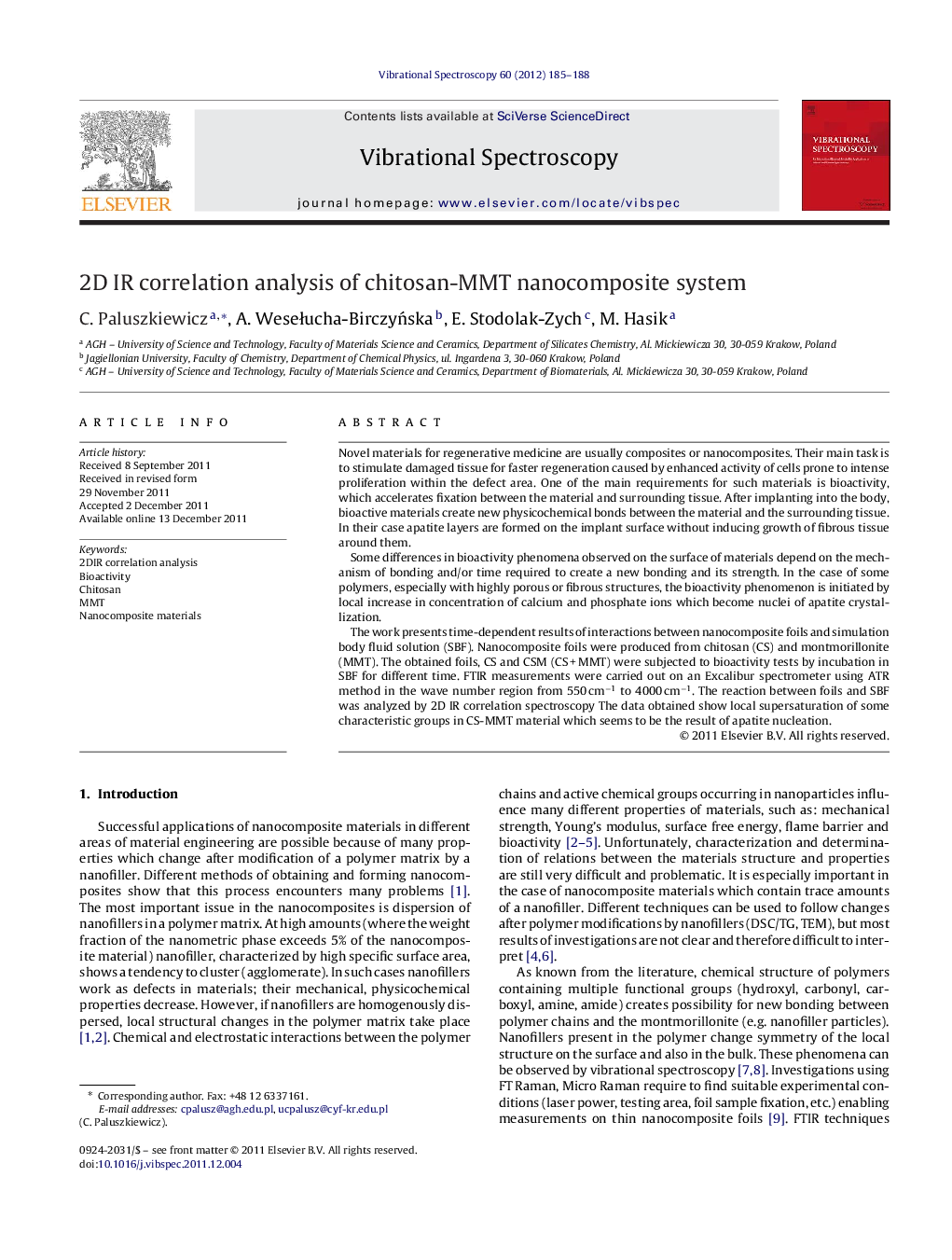| Article ID | Journal | Published Year | Pages | File Type |
|---|---|---|---|---|
| 1249628 | Vibrational Spectroscopy | 2012 | 4 Pages |
Novel materials for regenerative medicine are usually composites or nanocomposites. Their main task is to stimulate damaged tissue for faster regeneration caused by enhanced activity of cells prone to intense proliferation within the defect area. One of the main requirements for such materials is bioactivity, which accelerates fixation between the material and surrounding tissue. After implanting into the body, bioactive materials create new physicochemical bonds between the material and the surrounding tissue. In their case apatite layers are formed on the implant surface without inducing growth of fibrous tissue around them.Some differences in bioactivity phenomena observed on the surface of materials depend on the mechanism of bonding and/or time required to create a new bonding and its strength. In the case of some polymers, especially with highly porous or fibrous structures, the bioactivity phenomenon is initiated by local increase in concentration of calcium and phosphate ions which become nuclei of apatite crystallization.The work presents time-dependent results of interactions between nanocomposite foils and simulation body fluid solution (SBF). Nanocomposite foils were produced from chitosan (CS) and montmorillonite (MMT). The obtained foils, CS and CSM (CS + MMT) were subjected to bioactivity tests by incubation in SBF for different time. FTIR measurements were carried out on an Excalibur spectrometer using ATR method in the wave number region from 550 cm−1 to 4000 cm−1. The reaction between foils and SBF was analyzed by 2D IR correlation spectroscopy The data obtained show local supersaturation of some characteristic groups in CS-MMT material which seems to be the result of apatite nucleation.
